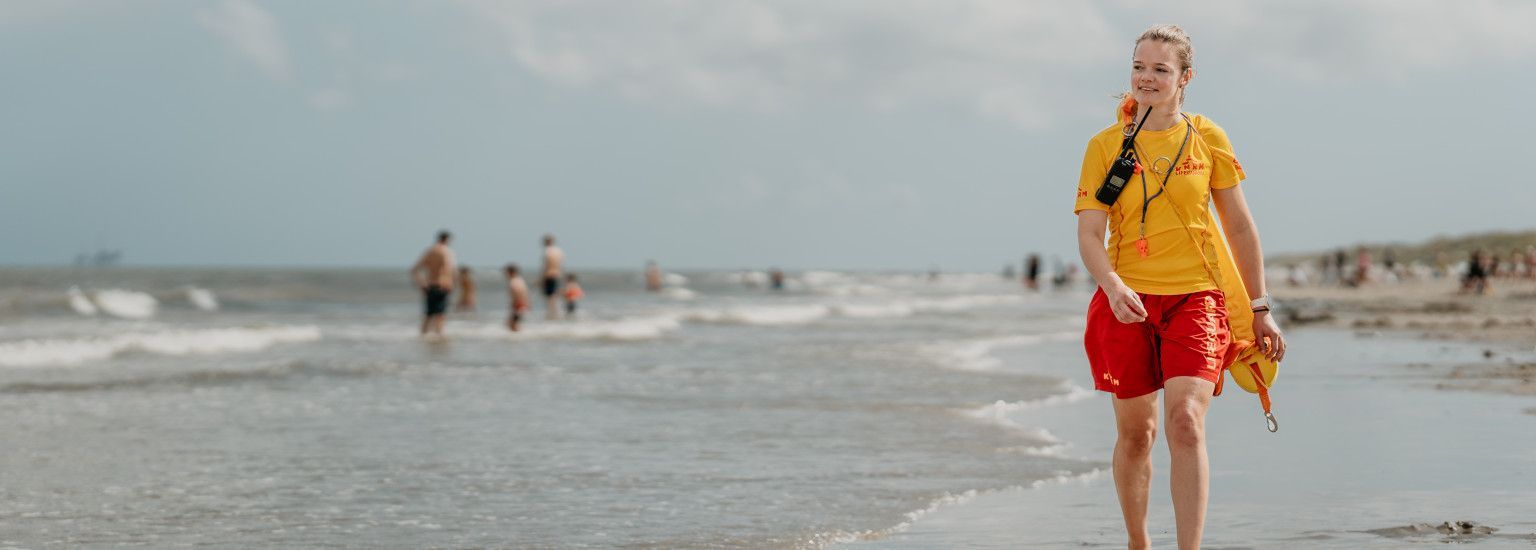
Lifeguard Tineke's story
In daily life, Tineke de Jong (29) deals with numbers as an accountant, but in the summer months she is instead a lifeguard on Nes beach. A world of difference, and that's exactly what she loves about it.
Tineke normally lives in Groningen, but fell in love with the island, the beach and the sea as a little girl. So as a teenager she went to Ameland for holiday work in the hospitality industry. After two seasons, she thought it would be even more fun to work on the beach, and she has now been dedicating herself to providing beachgoers with a fun and, above all, safe beach day for ten years.
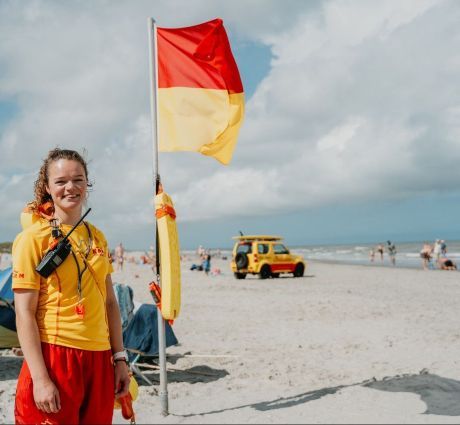
-
She does this by informing, supervising, preventing dangerous situations and carrying out rescue operations when people get into trouble. Together with the other lifeguards, Tineke is on the beach from 10:00 - 18:00, five to six days a week and three to four weeks a summer. She also spends four more weekends - two before the high season and two after - on the Amelander beach. "This is how I do it every year and this way I can combine my summer job with my work very well," she says.
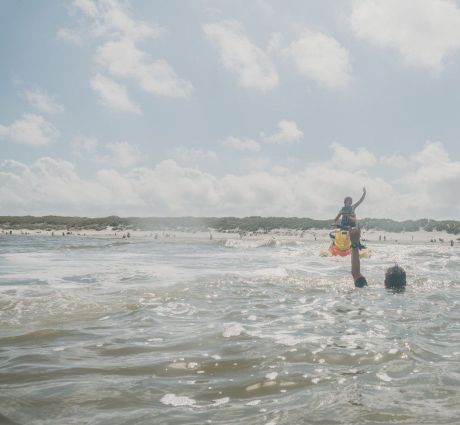
-
Life on the beach
The lifeguards also live on the beach outside working hours: "We sleep at the lifeguard station, so we wake up on an empty beach every morning and can watch the sunset every evening. That's really magical. Before or after working hours and on our days off, we go swimming, running, playing volleyball or surfing together." Because the lifeguards not only work together but also spend a lot of time together privately, they form a close-knit group. Tineke: "Even in the off-season, we keep in touch and at the end of the summer, we already look forward to the next season together."
Preventive work
Besides relaxation and fun, there is of course also hard work, as the lifeguards have an important job: "We are responsible for beach safety, and this entails several tasks, such as assessing sea and beach conditions and analysing risks." Based on the risk analysis, the lifeguards set out the safest possible swimming area in the morning with red and yellow flags. They do this every day, as changing winds, waves and mouse currents have a huge impact on safety in and on the water. From the moment the first visitors walk onto the beach, there are always two pairs of eyes on the water. "One lifeguard stands at the waterline, to address and warn people, and the other keeps an overview from the upper lifeguard station. A third and possibly fourth person picks up the other tasks. We have a kind of rotation system, so during the day you have different responsibilities each time."
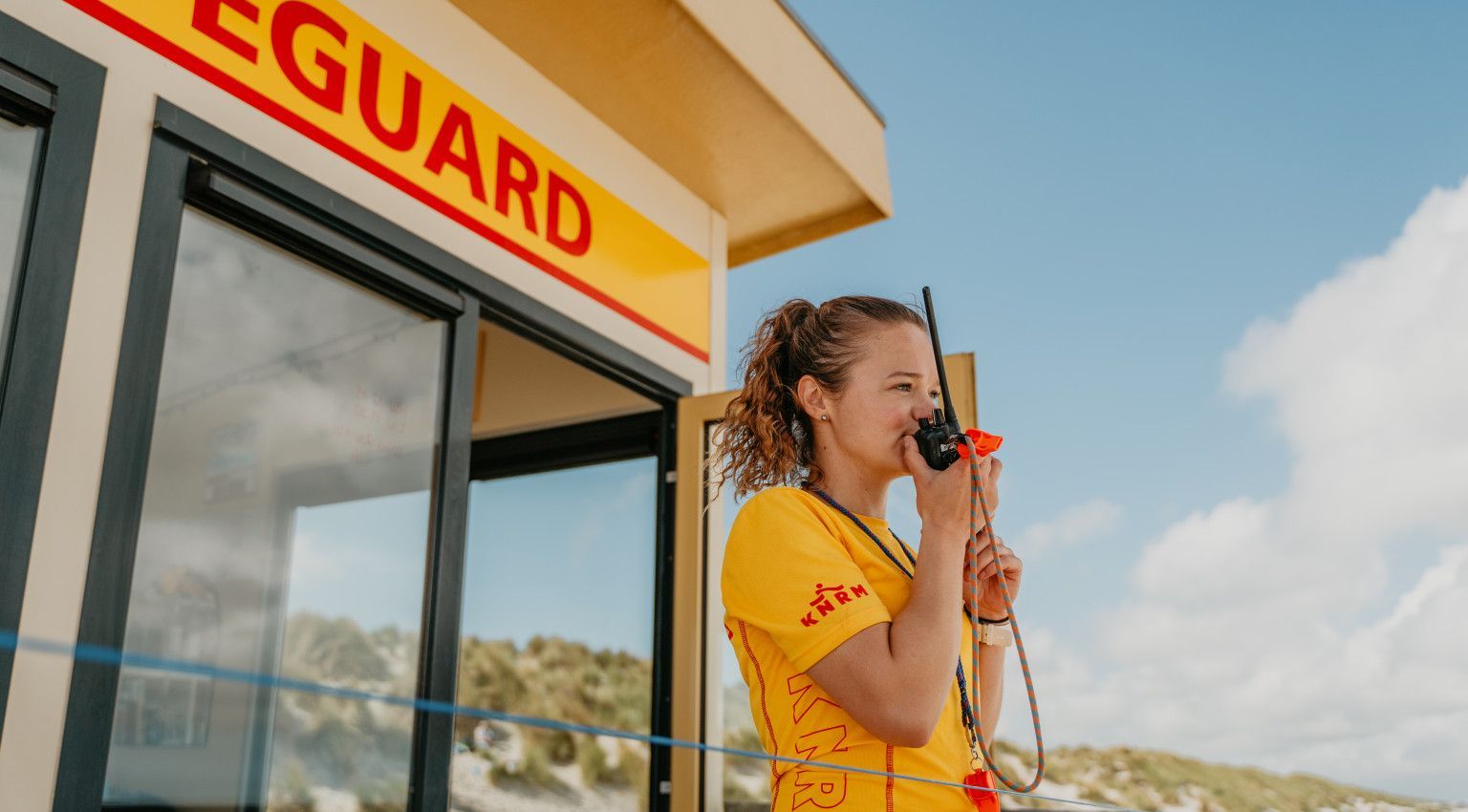
Saving lives
Much of the work is prevention-oriented. The lifeguards keep a close eye on what is happening to prevent people from getting into trouble. If they do, they immediately go into the water to rescue people.
For this, they have various aids: the rescue tube, the rescue board and the water scooter: "If a person is close by, we use the rescue tube: a floating foam rescue device. Are there several people in distress or is the accident further away? Then we use a rescue board; a kind of surfboard. If the emergency is outside the swimming area or further out to sea, we launch the watercraft."
In summer 2022, the team of lifeguards saved several more lives with the watercraft. "A mother and two children got into trouble when they were caught in a mui. In such a situation, we really do make the difference between life and death. Fortunately, this family got off well, but only thanks to quick intervention. It could have ended very differently."
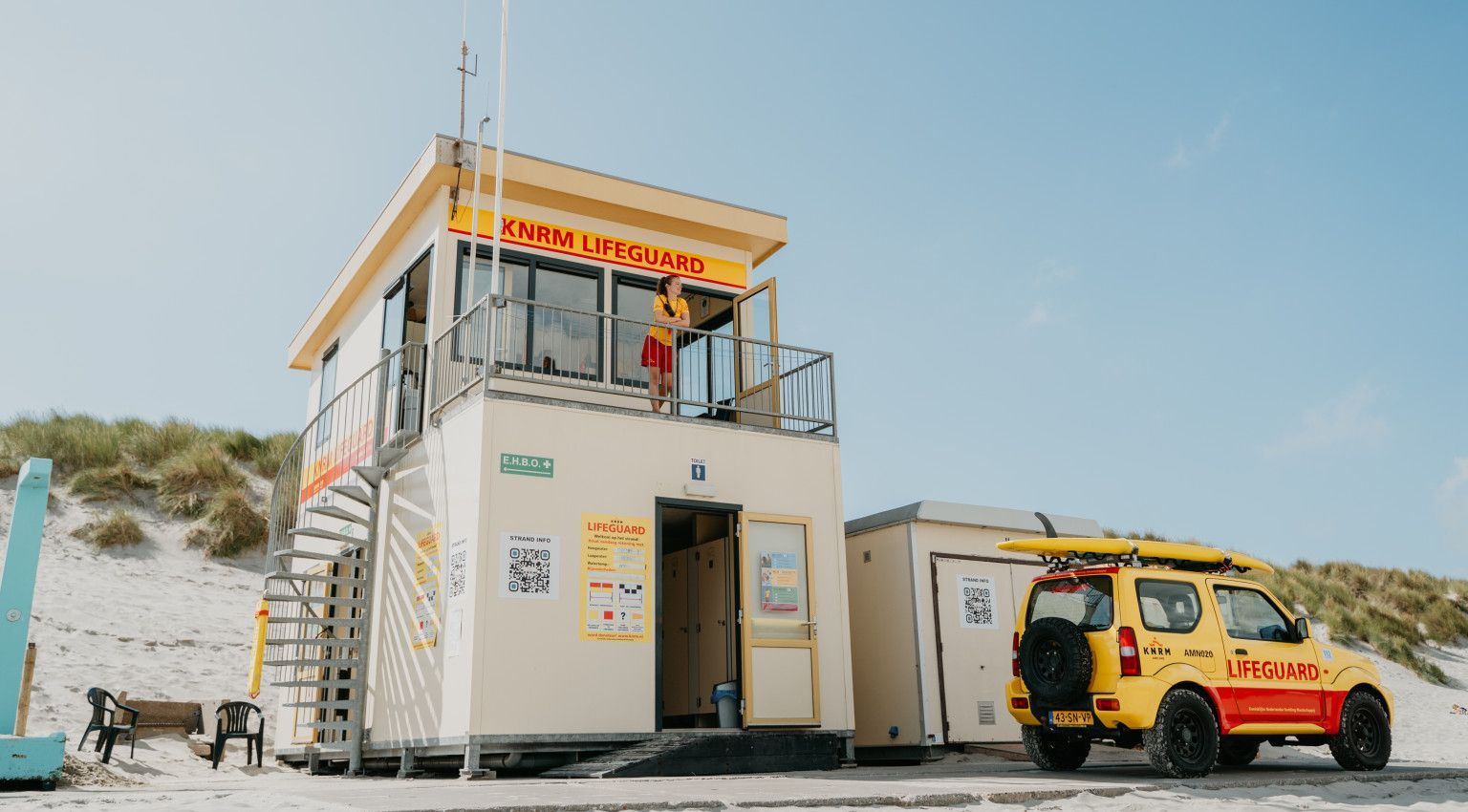
Admission requirements
Therefore, becoming a KNRM lifeguard does not happen overnight. You have to have the right skills, meet the entry requirements, pass the selection day and undergo training.
Tineke: "Everything you need to know and be able to do, you learn in the six-day beach lifeguard training course on Vlieland: recognising and responding to risks and dangers, providing first aid, performing rescue techniques and much more." Depending on where you will be working, you may also need to be able to drive a rescue water scooter or drive a four-wheel drive car on the beach. You learn this in additional training courses. "But if you can't swim 400 metres within eight minutes, can't run a kilometre or are not sufficiently available, you won't pass the selection and you won't even have to take the training courses." Reasons enough to respect and appreciate lifeguards on the beach.
Three tips from Tineke
Tip 1
Watch the flags and always swim in the supervised swimming area
In the swimming area between the red and yellow flags, there are no mussels and lifeguards supervise. Also look for the flags at the lifeguard post. A red-yellow flag means the post is open, a yellow flag means it is dangerous to swim, a red flag means swimming is prohibited and an orange windbag means offshore wind. In offshore wind, you will quickly drift away if you go out to sea with air mattresses, rubber boats or beach balls. So do not take them into the water.
Tip 2
Never swim alone
Always go into the water in pairs (or more) so you can help each other if necessary. Are you stubborn and really want to go into the water alone? Then agree in advance who will keep an eye on you from the beach - and who can call for help when needed.
Tip 3
Need help? Stay calm and attract attention
Find yourself in a rip current? Do not panic or swim against the current. Let yourself be carried along behind the sandbank, where the current subsides. Then swim sideways back to the beach. Is anyone else in trouble? Call for help, alert a lifeguard or call 112. Meanwhile, keep a close eye on the person in the water so you know where he or she is.